Himalayas Surf Stats
- Forecast
- Maps
- Live
- Weather State
- Spot Information
All swells
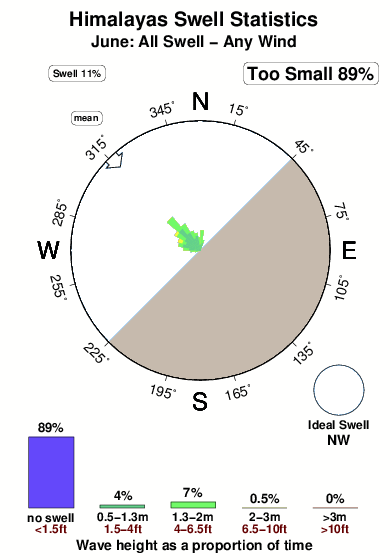


This image illustrates the combination of swells directed at Himalayas over a normal June, based on 3506 NWW3 model predictions since 2006 (values every 3 hours). The wave model does not forecast wind or surf right at the coast so we have chosen the most applicable grid node based on what we know about Himalayas. In the case of Himalayas, the best grid node is 44 km away (27 miles). The rose diagram illustrates the distribution of swell directions and swell sizes, while the graph at the bottom shows the same thing but lacks direction information. Five colours show increasing wave sizes. The smallest swells, less than 0.5m (1.5 feet), high are coloured blue. These happened only 89% of the time. Green and yellow illustrate increasing swell sizes and largest swells greater than >3m (>10ft) are shown in red. In each graph, the area of any colour is proportional to how commonly that size swell happens. The diagram implies that the dominant swell direction, shown by the biggest spokes, was NW, whereas the the most common wind blows from the ENE. Because the wave model grid is out to sea, sometimes a strong offshore wind blows largest waves away from Himalayas and offshore. We group these with the no surf category of the bar chart. To simplify things we don't show these in the rose graph. Because wind determines whether or not waves are clean enough to surf at Himalayas, you can load a different image that shows only the swells that were predicted to coincide with glassy or offshore wind conditions. During a typical June, swells large enough to cause surfable waves at Himalayas run for about 11% of the time.



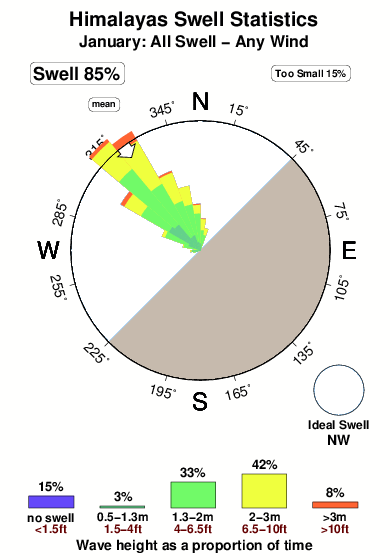
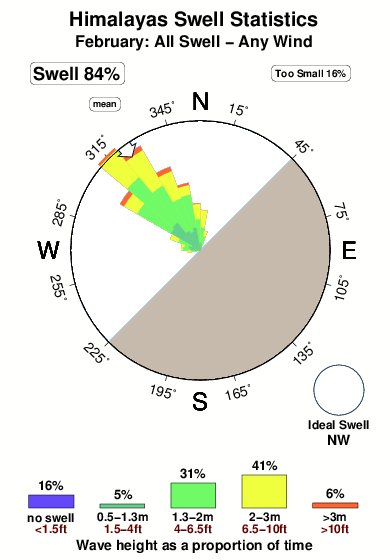
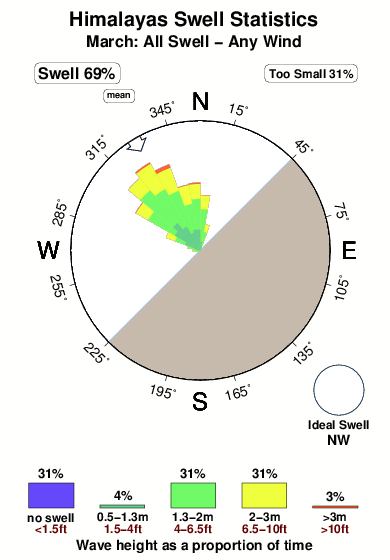
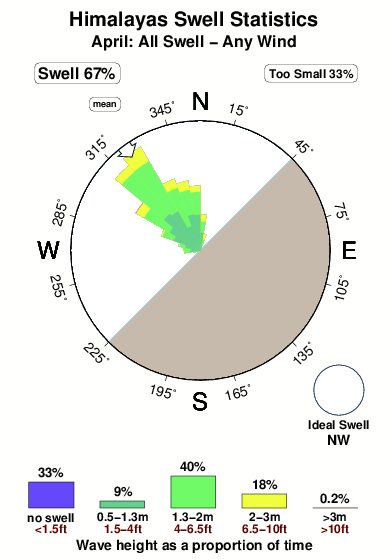
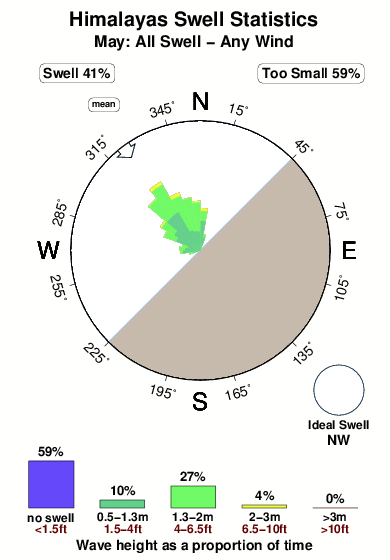

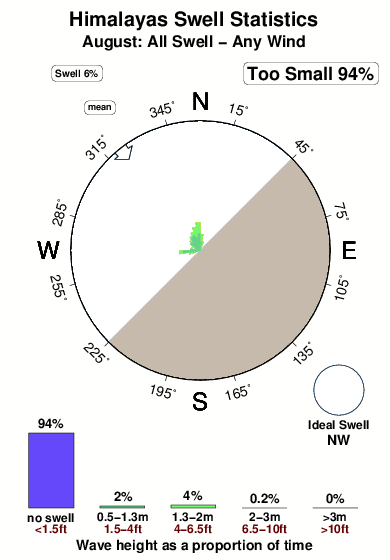
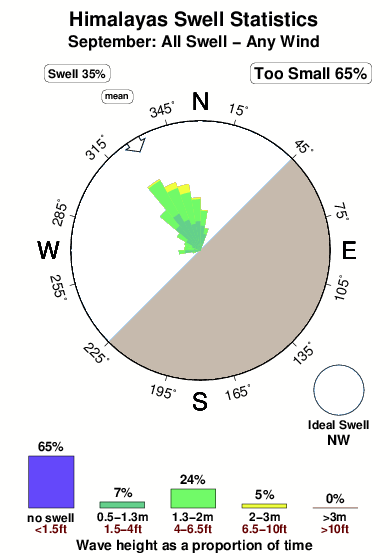
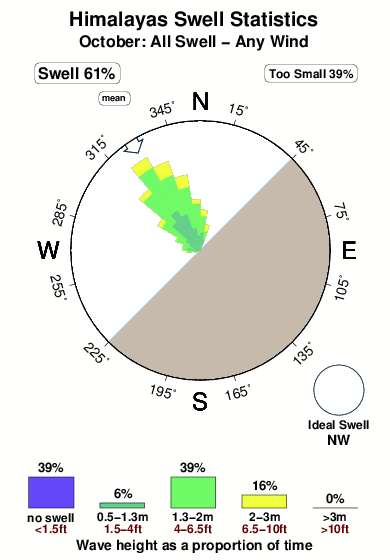
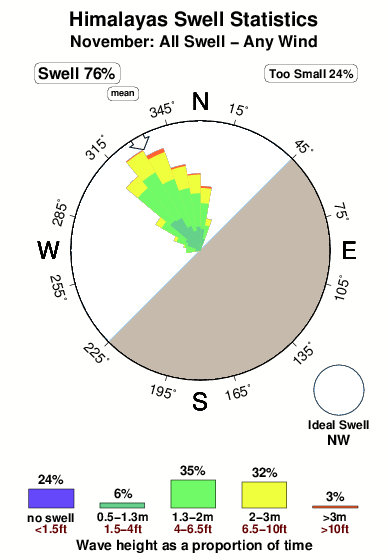
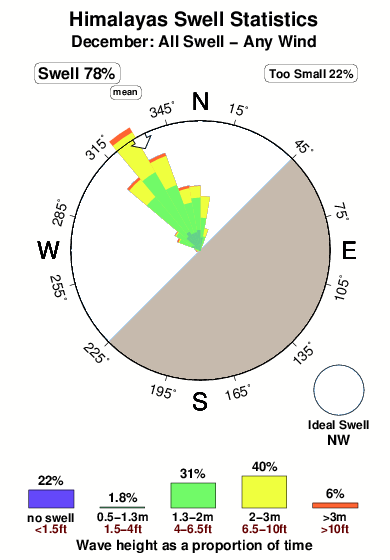







 Nearest
Nearest